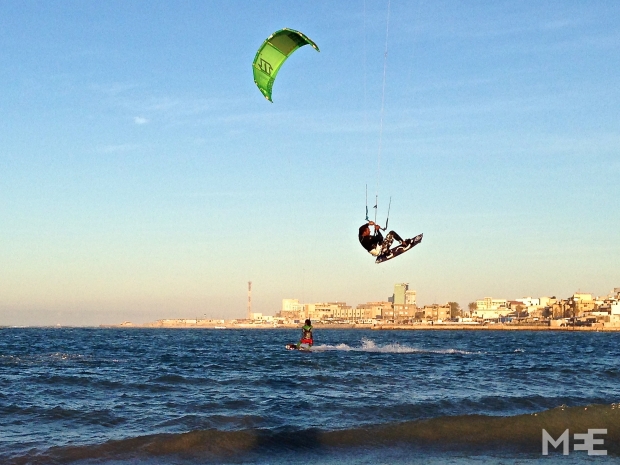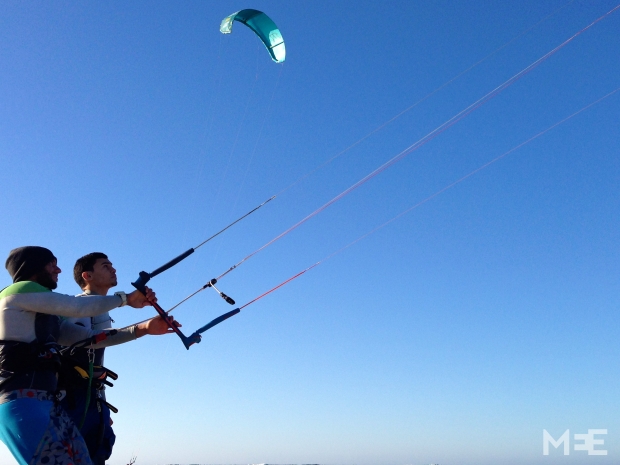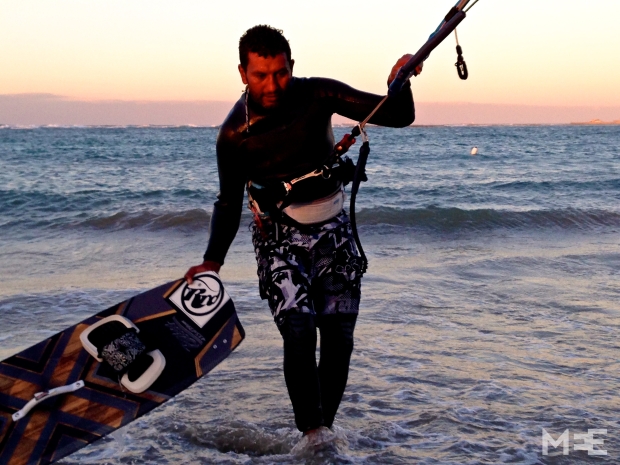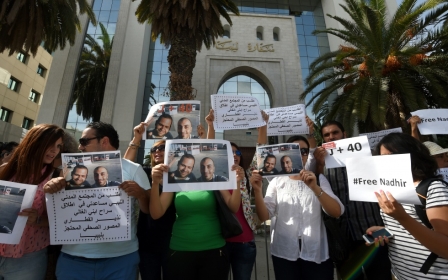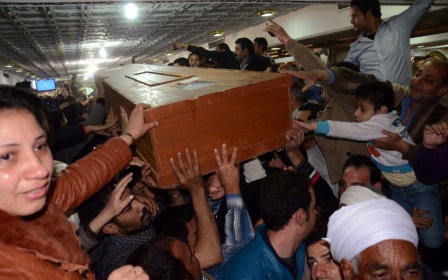Kite-surfing on the edge of Libya’s civil conflict
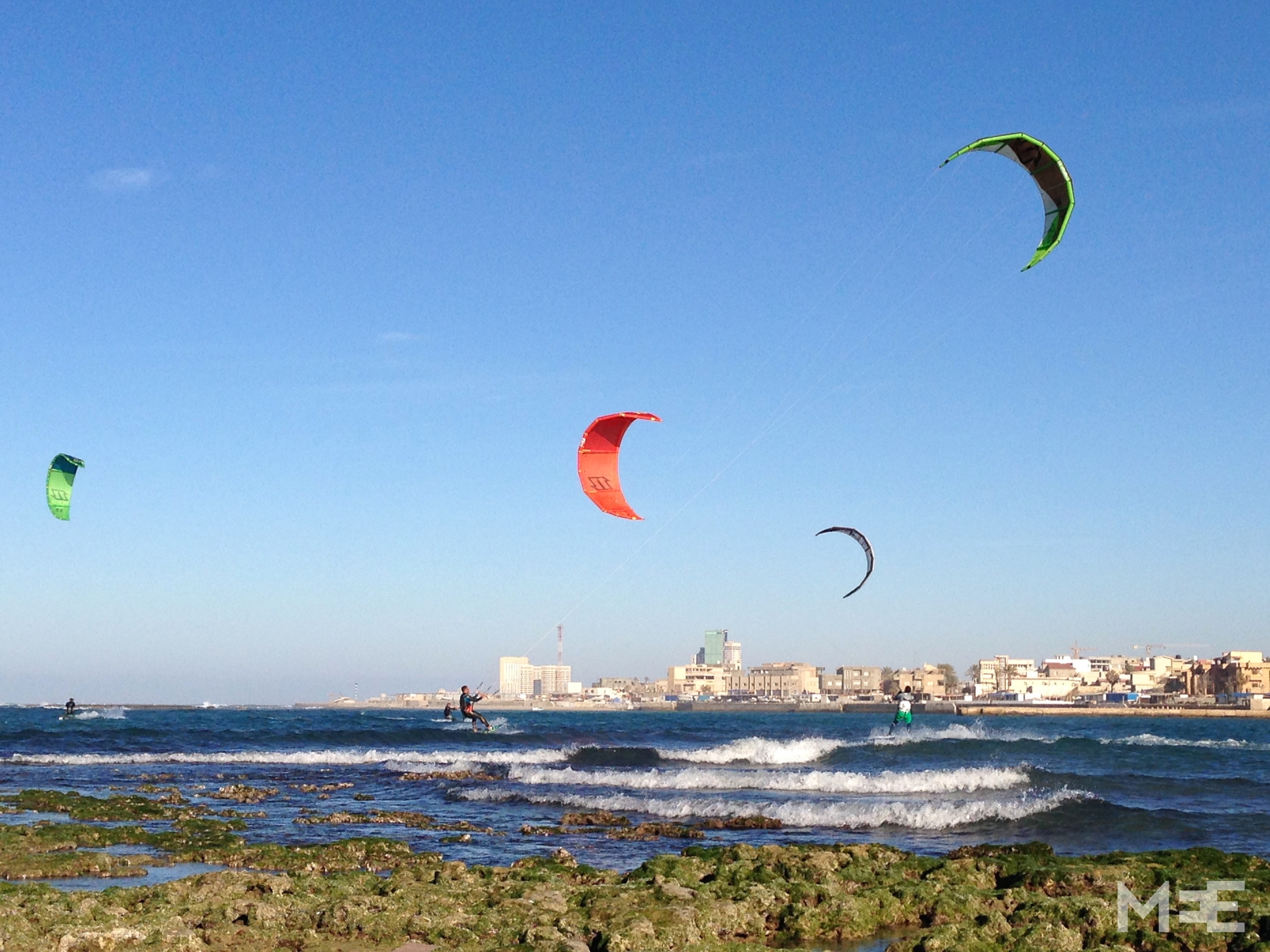
TRIPOLI - Every morning, Libya’s only kite-surfing instructor, Jalal El-Walid opens his shop on Tripoli’s seafront to the capital’s small but committed community of kite-surfers.
Against the backdrop of half-finished building projects, distant hotels and 1980s-era blocks of flats that comprise Tripoli’s curious architectural horizon, the kites fly high and surfers dart swiftly across the sea below. Nearing the shore, on the curve of a wave, they are lifted up and out of the surf as the kites catch the wind, to whoops of adrenalin-filled delight.
The country’s fractured civil conflict - being played out in violent regional clashes - seems a world away from the colourful kites embellishing a lagoon in the West Tripoli district of Hay Al-Andalus.
On most days, “Wind Friends” - the name of Jalal’s kite-surfing shop and training centre - attracts around eight kiters. If the wind is good, they head out into the surf. If conditions are not favourable, they maintain their kite, practice kite-control on the beach, or watch inspirational surfing videos whilst sipping tea.
“When you see us smiling, you know there is wind,” Jalal’s brother, Faiz, shouted, splashing out of the blue and white surf to hand his kite over to a waiting friend. Every year, at the end of December, there is always one really windy week, he explained, although unseasonal storms blowing across the Mediterranean Sea have so far made January an exciting month for wind and surf.
“In 2008, no one in Libya did kite-surfing, apart from ex-patriates living here,” Jalal said. “One of my friends encouraged me to try, so I bought a kite, which I broke the first time I used it.” His friend gave him a few rudimentary lessons, and so began an all-consuming passion.
“Once I had learned how to kite-surf, I wanted to experience different parts of the Libyan coast, so every week I’d go somewhere new,” he said. “People watched me and wanted to try it, so I showed them.”
A Facebook page he created for enthusiasts inspired others and, with an ever-increasing demand for lessons, in 2012 he qualified as an instructor in Egypt.
However challenging kite-surfing may look, it takes between just six and twelve hours of tuition to grasp the basics of kite-control. Sufian took up the sport just three months ago, but is already proficient at impressive-looking jumps. “I saw kite-surfing in Cyprus and when I came back I heard about Jalal, who has been a great instructor,” he said. “Before that, I had no idea we even had a school here in Libya.”
Jalal views the sport as a worthwhile alternative for some of the country’s disenchanted youth. “Many young people drink, smoke hashish and play with guns, but I say, ‘Come here and learn to kite-surf instead.’ I’m always delighted when young people come here wanting to learn.”
The sport also holds appeal for women and the club has two regular female Libyan kiters. Libyan artist, Hadia Gana, briefly tried kite-surfing whilst studying in the Netherlands in 2008. “With the winds of freedom felt after liberation, I started seeing a few kites along the Tripoli shoreline,” she said. Her friend, Houda, also inspired to head out into the waves, contacted the Wind Friends Facebook page saying they were two girls interested in learning. Jalal welcomed them as new students and they became part of a then six-strong group of Libyan kite-surfers.
Although Libya is a very conservative society, there has been no issue with sexism. “The new boys are a bit puzzled when they first see me or Houda but, when we start kiting, we are equal,” Hadia explained. “I think a lot of boys started kite-surfing because they saw that girls could do it.”
“I think girls being included in a ‘male’ environment works very well,” she explained. “Most of the time, these days, I’m alone with a bunch of boys. We surf, we talk about technical aspects of wind. We’ve become really good friends.”
Jalal also encourages children to try out water-sports. In the summer, he runs courses in kite-surfing, sailing, swimming and diving skills. In the first month of last year’s season, he taught 200 children. Demand for tuition fell away in July, however, when rival armed groups clashed over control for Tripoli International Airport, devastating the aviation infrastructure and paving the way for an armed group, known as Fajr Libya (Libya Dawn), to take control of the capital.
Although Tripoli has been relatively quiet in recent months, Libya’s mounting instability has decimated the presence of the international community. Often having more experience and enthusiasm for extreme sports than locals, ex-patriates considerably boosted Tripoli’s kiting community and, with more expendable cash, brought good business to Jalal.
Fighting has also affected the kite-surfing scene in other parts of Libya, especially in Benghazi, where the sport had proved so popular that Jalal opened a shop there in 2013. With the city ravaged by fierce clashes between pro-government forces and Islamist-affiliated militias, he temporarily closed the store in October. “I’ll reopen it as soon as I can,” he said. “The kite-surfing community in Benghazi is desperate to get back out on the waves. They haven’t been able to take their kites out for three months because of the war.”
A month later, promising winds tempted him into the waves near Tripoli Port, but he was again ordered out of the water. “I was using my old black, red and white-striped kite and, when I reached the beach, these military policemen asked me why I was playing with something that looked like the revolutionary Libyan flag which is red, black and green. I told them not to worry, I could use a green kite [the colour of the Libyan flag under Qaddafi] if they preferred.”
Although he laughs when he tells such stories, overflowing with quiet enthusiasm for his chosen sport, Libya’s descent into instability and civil conflict has interrupted what was becoming a very promising enterprise. However committed Tripoli’s kite-surfers remain, from a trading perspective, Jalal’s business is at a low ebb.
The plummeting value of the Libyan Dinar and the inability of banks to issue letters of credit have prevented him from importing any products since July. With the laid-back attitude that seems to characterise surfers around the world, he points out that although he has limited stock, there are few locals who can afford to buy it anyway. “People are nervous and feel they need to save their money because they don’t know what will happen in the future,” he said.
He covers his overhead with the modest sums he makes from teaching, keeping business ticking over until such time as the country becomes more stable and prosperous. “There’s not much trade for now but I see this as more like a business for the future.”
And Jalal has high hopes for the future, describing a vision for the coast of Libya that is a far cry from the current conflicts sporadically raging along its shores. “Libya’s waters are ideal for kite-surfing, which requires flat, shallow water and wind,” Jalal explained. In Zuwara, for example, there is a seven kilometre spit of sand fringed with palm trees known as Farwa Island, which is one of the country’s most popular kite-surfing locations and particularly ideal for first-time kiters.
“I want to make Libya one of the top destinations in the world for kite-surfing. I’d like to open a school in every town and city along the coast and my dream is to see at least 50 percent of this country’s shores devoted to the sport,” he said. “We have almost 2,000 kilometres of coastline and, legend has it, the longest wave of any Mediterranean shore, a combination which makes Libya the perfect place for kite-surfing."
New MEE newsletter: Jerusalem Dispatch
Sign up to get the latest insights and analysis on Israel-Palestine, alongside Turkey Unpacked and other MEE newsletters
Middle East Eye delivers independent and unrivalled coverage and analysis of the Middle East, North Africa and beyond. To learn more about republishing this content and the associated fees, please fill out this form. More about MEE can be found here.


